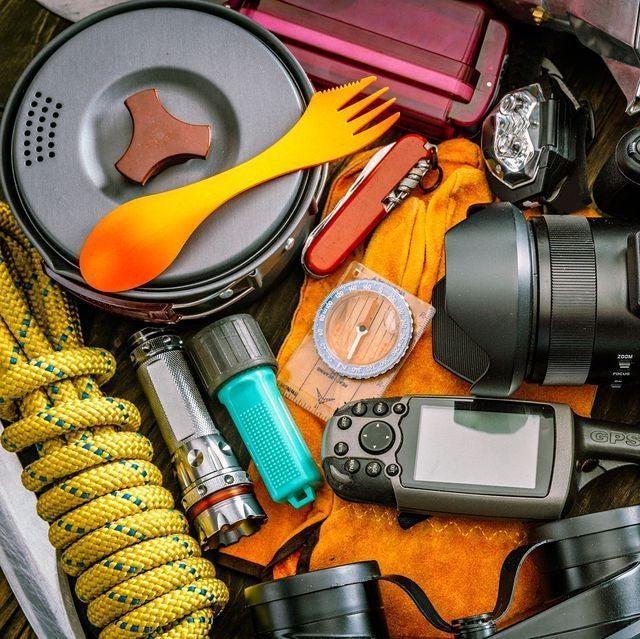Bug-Out Bags and Get-Home Bags FAQ
Q: What are some essential items to include in a bug-out bag?
A: Some essential items to include in a bug-out bag are food and water, shelter, clothing, a first-aid kit, a multi-purpose tool, fire-starting tools, a flashlight, a map and compass, personal hygiene items, and important documents.
Q: What is the difference between a bug-out bag and a get-home bag?
A: A bug-out bag is a portable kit containing essential items for survival during an emergency or disaster, while a get-home bag is a smaller and more compact kit designed to help you get home if you are stranded or lost away from home.
Q: How heavy should my bug-out bag be?
A: Ideally, your bug-out bag should weigh no more than 20% of your body weight. However, the weight of your bug-out bag will ultimately depend on your fitness level and physical ability to carry it for extended periods of time.
Q: Can I use a regular backpack as a bug-out bag?
A: Yes, you can use a regular backpack as a bug-out bag. However, ensure that the backpack is durable, comfortable, and large enough to carry all necessary items.
Q: How often should I update my bug-out bag contents?
A: It is recommended to update your bug-out bag contents at least once a year or as needed to ensure that the items are still usable and up-to-date.
Q: Should I have more than one bug-out bag?
A: It is recommended to have more than one bug-out bag, especially for large families. Consider having a separate bug-out bag for your car or workplace as well.
Q: What kind of food should I pack in my bug-out bag?
A: Pack non-perishable and high-energy foods like granola bars, nuts, trail mix, jerky, and canned goods. Also, include a way to purify water, such as a water filter or purification tablets.
Q: How many days of supplies should my bug-out bag contain?
A: Your bug-out bag should contain supplies for at least 72 hours, including food, water, shelter, and medical supplies.
Q: How do I choose the best bug-out bag for my needs?
A: Consider size, weight, durability, comfort, and organization features when choosing a bug-out bag. Ensure it can hold all your essentials comfortably.
Q: What kind of shelter should I include in my bug-out bag?
A: Include lightweight and compact options like a tent, tarp, or bivy sack, along with a sleeping bag or blanket for warmth.
Q: What kind of tools and equipment should I include in my bug-out bag?
A: Pack tools for survival tasks such as starting a fire, building shelter, and preparing food. Examples include a multi-tool, knife, paracord, duct tape, compass, and water filtration device.
Q: Can I include firearms in my bug-out bag?
A: It is legal but ensure compliance with local laws and regulations regarding gun ownership and transportation. Proper training and safety measures are essential.
Q: What kind of clothing and footwear should I pack in my bug-out bag?
A: Pack durable, weather-resistant clothing and sturdy footwear for protection from the elements. Ensure comfort and mobility.
Q: How can I keep my bug-out bag organized and easy to access?
A: Use designated compartments, packing cubes, or compression bags to organize items. Label for easy identification and practice quick access.
Q: What are some common mistakes to avoid when packing a bug-out bag?
A: Avoid overpacking, neglecting weight considerations, excluding essentials like a first aid kit, and not testing contents before emergencies.
Q: How can I train and practice using my bug-out bag?
A: Start with short trips in safe environments, gradually increasing distance and duration while adjusting bag contents accordingly.
Get-Home Bags (GHBs) FAQ
Q: How do I determine the right size of a get-home bag?
A: Consider your commute length and potential obstacles. A small backpack or messenger bag suffices for short commutes; larger options suit longer distances.
Q: What should I include in my get-home bag for a short-distance trip?
A: Include water, snacks, a first aid kit, flashlight, multi-tool, and personal items for short-distance trips.
Q: How can I use my get-home bag in combination with my bug-out bag?
A: Use your get-home bag as a supplement to your bug-out bag for short trips or as a backup in case your bug-out bag is lost or stolen.
Q: How can I store my get-home bag in my vehicle?
A: Keep it in the trunk or backseat for easy access in emergencies. Consider securing it with locks or other measures.
Q: Can I use my get-home bag for everyday use?
A: Yes, but regularly check and restock it with necessary supplies. Alternatively, store it in your vehicle or workplace for emergency access.

American Survivalist Insider
Join our community and be the first to receive expert survival guides, exclusive product releases, limited-time discounts, and the latest news and trends in emergency preparedness.

